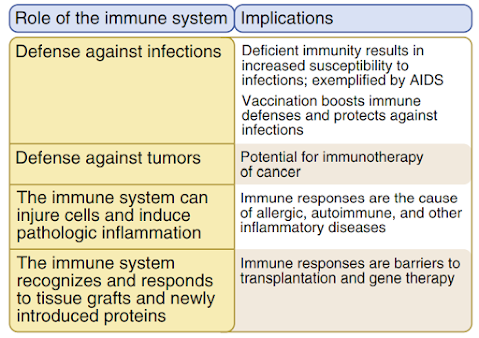hereditary elliptocytosis
1.Hereditary elliptocytosis (HE) refers to a group of inherited blood conditions where the red blood cells are abnormally shaped.
2. Hereditary elliptocytosis is red cell membrane
disorder charecterised by mutations in genes encoding membrane or skeletal
proteins, that alters membrane function and reduces red cell deformability.
3.The genes mutated in HE are SPTA1,SPTB or protein 4.1r
genes.
4. The red cell shape is classically elliptic, with
different features from short stick shape to the shape more oblong on blood
smear.
1.These mutations have a common end result; they destabilize the cytoskeletal scaffold of cells.
2.This stability is
especially important in erythrocytes as they are constantly under the influence
of deforming shear forces. As disc-shaped erythrocytes pass
through capillaries, which can be 2-3 micrometers wide, they are forced to assume an elliptical shape in
order to fit through. Normally, this deformation lasts only as long as a cell
is present in a capillary, but in hereditary elliptocytosis the instability of
the cytoskeleton means that erythrocytes deformed by passing through a
capillary are forever rendered elliptical. These elliptical cells are taken up
by the spleen and removed from circulation when they are younger than they would
normally be, meaning that the erythrocytes of people with hereditary
elliptocytosis have a shorter than average life-span (a normal person's
erythrocytes average 120 days or more).
The most common genetic defects (two third of all cases
of HE ) are in genes for poly peptides alpha and beta spectrin.
These two
polypeptides combine to form spectrin tetramers that are the basic structural sub unit of cytoskeleton of all cells in the body.
Individuals with a single mutation in one of the
spectrin genes are usually asymptomatic but those who are homozygotes have sufficient cell membrane
instability.
EL1: Less common than spectrin mutations are band
4.1 mutations. Spectrin tetramers must bind to actin in order to
create a proper cytoskeleton scaffold, and band 4.1 is an important protein
involved in the stabilization of the link between spectrin and actin. Similarly
to the spectrin mutations, band 4.1 mutations cause a mild haemolytic anaemia
in the heterozygous state, and a severe haemolytic disease in the homozygous
state.
EL4: Southeast Asian ovalocytosis is associated with the Band 3 protein.
Another group of mutations that lead to elliptocytosis
are those that cause glycophorin C deficiencies.
Glycophorin
C has the function of holding band 4.1 to the cell membrane. It is thought that
elliptocytosis in glycophorin C deficiency is actually the consequence of a
band 4.1 deficit, as glycophorin C deficient individuals also have reduced
intracellular band 4.1 (probably due to the reduced number of binding sites for
band 4.1 in the absence of glycoprotein C).
SYMPTOMS
The symptoms of hereditary elliptocytosis may be
different from person to person.
Symptoms may appear at any age. Many people are asymptomatic and the symptoms in people may
vary from person to person.
These symptoms may be
mild and severe.
The most common signs and symptoms of hereditary
elliptocytosis are:
• Anemia
-fatigue
-shortness of breath
• Gallstones
• Yellowing of the skin and eyes (jaundice)
• Enlarged spleen (splenomegaly)
• Very low blood levels after an infection (aplastic crisis)
• Anemia
-fatigue
-shortness of breath
• Gallstones
• Yellowing of the skin and eyes (jaundice)
• Enlarged spleen (splenomegaly)
• Very low blood levels after an infection (aplastic crisis)
DIAGNOSIS
Hereditary elliptocytosis can be diagnosed by looking at
the shape of the red
blood cells under the
microscope (blood smear). Genetic testing can help as well.
In general it requires that atleast 25% of RBCs in the
specimen are abnormally elliptical in
shape, though observed percentage of elliptocytes can be 100%.
Definitive diagnosis involve osmotic fragility testing,
autohaemolysis test and direct protein essaying by gel electrophoresis.
Treatment
The vast majority of those with hereditary
elliptocytosis require no treatment whatsoever.
Folate helps to reduce
the extent of haemolysis in those with significant haemolysis due to hereditary
elliptocytosis.
Removal of the spleen (splenectomy) is effective in reducing the
severity of these complications, but is associated with an increased risk of
overwhelming bacterial septicaemia, and is only performed on those with
significant complications.
Those with HE have a
very good prognosis as it is mild and
rarely life threatening.

Comments
Post a Comment